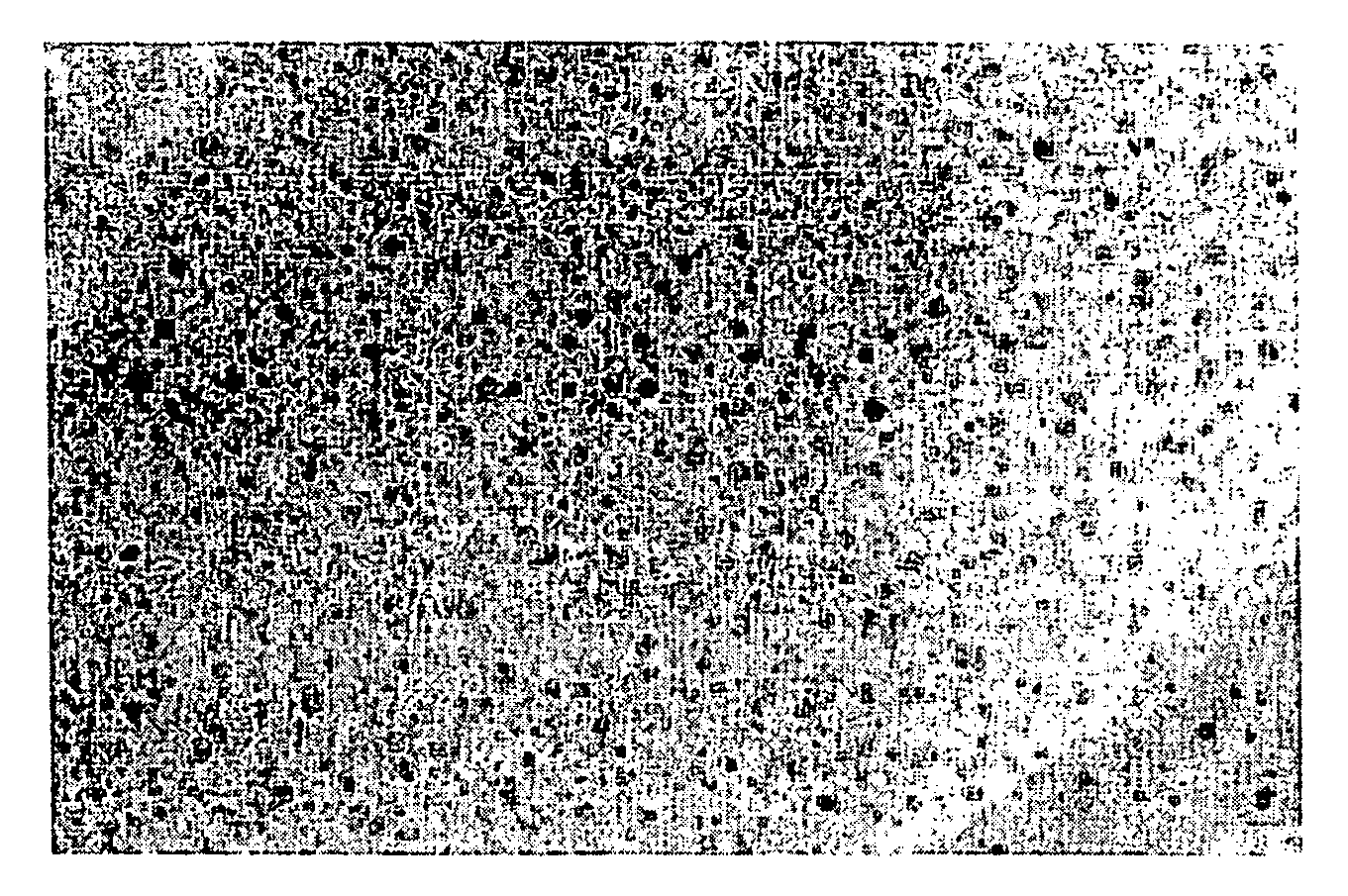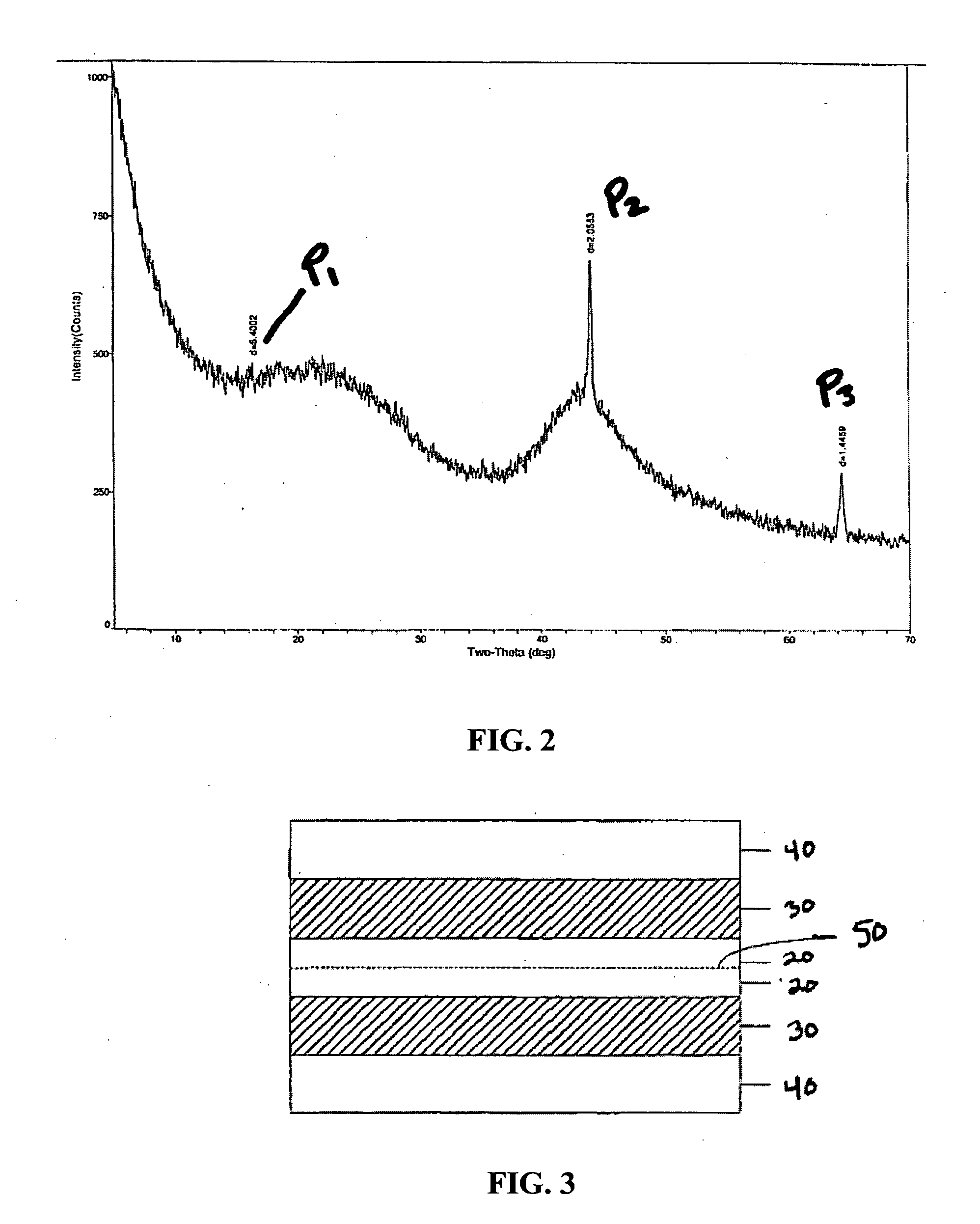Electric double layer capacitors, capacitor materials and methods of making the same
a capacitor material and double layer technology, applied in the field of carbon materials and methods, can solve the problems of insufficient energy density range or practicality for high-energy applications, and achieve the effect of improving the previous carbon materials used
- Summary
- Abstract
- Description
- Claims
- Application Information
AI Technical Summary
Benefits of technology
Problems solved by technology
Method used
Image
Examples
example 1
[0041]Three hundred grams of 45 wt % NaOH solution in water was mixed with 100 grams of synthetic phenolic resole resin which contains about 70% resin in 30% water. The mixture was subsequently dried and cured at 180° C. to form a sponge like mass. This mass was heated in nitrogen up to 800° C. for two hours to carbonize the resin. The carbonized resin was subsequently steam treated to remove the sodium from the carbon. This carbon was then ground to approximately 10 micron mean particle size. The carbon was mixed with 10 grams of carbon black and 10 grams of PTFE to obtain a well mixed mass. This mixture was subsequently rolled on a roll mill to obtain a thin film approximately 50 microns thick. From the film obtained, carbon electrodes were stamped out.
[0042]The electrodes were then soaked with an electrolyte solution (1M TEA-TFB in acetonitrile). A porous separator was also soaked in the electrolyte solution and the two carbon electrodes with the separator in between were assembl...
example 2
[0043]The experiment of Example 1 was repeated, but instead of using carbon materials manufactured by processes herein, a standard conventional commercial carbon was used. Particularly, a carbon from PICA USA Inc., Columbus, Ohio, specially developed for EDLC applications was utilized. Standard voltametric as well galvanostatic tests were carried out to measure the performance of the cell. The measured energy density of the device was 6 Wh / l and the specific power was 3707 W / Kg. The BET surface area of this carbon was 1800 m2 / g. FIG. 5 shows the result of measurement for the low angle X-ray diffraction pattern on the carbon of this example. The peak P2′, exists at the position of two-theta of about 1.5°. More importantly, P2′ has an interlayer distance (d) of 57.32.
example 3
[0044]The experiment of Example 1 was repeated, but instead of using 45 wt % NaOH solution, 45% wt KOH solution was utilized. Standard voltametric as well galvanostatic tests were carried out to measure the performance of the cell. The measured energy density of the device was 15.6 Wh / l and the specific power was 6518 W / kg. FIG. 6 shows the low angle X-ray diffraction pattern of the carbon obtained in Example 3 The peaks P1′, exists at the position of two-theta of about 1°. Moreover, P3′ has an interlayer distance (d) of 95.95.
PUM
| Property | Measurement | Unit |
|---|---|---|
| energy density | aaaaa | aaaaa |
| temperatures | aaaaa | aaaaa |
| energy density | aaaaa | aaaaa |
Abstract
Description
Claims
Application Information
 Login to View More
Login to View More - R&D
- Intellectual Property
- Life Sciences
- Materials
- Tech Scout
- Unparalleled Data Quality
- Higher Quality Content
- 60% Fewer Hallucinations
Browse by: Latest US Patents, China's latest patents, Technical Efficacy Thesaurus, Application Domain, Technology Topic, Popular Technical Reports.
© 2025 PatSnap. All rights reserved.Legal|Privacy policy|Modern Slavery Act Transparency Statement|Sitemap|About US| Contact US: help@patsnap.com



